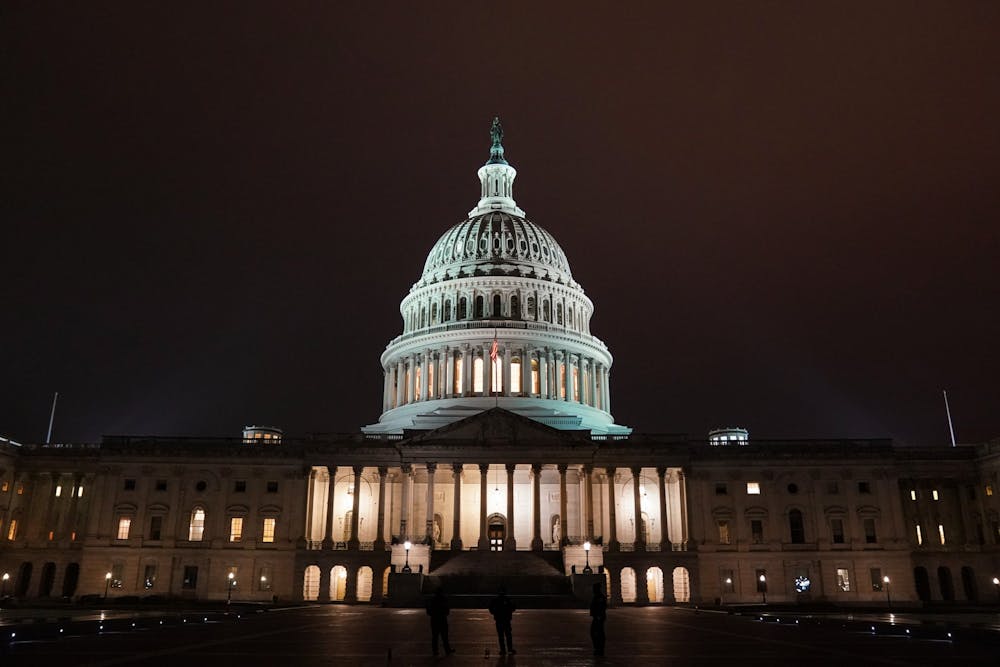The Penn Wharton Budget Model released a report this week predicting a 4% drop in gross domestic product in 2050 as a result of the newly-released proposed Senate budget resolution.
Democrats are working to pass a $3.5 trillion budget through the budget reconciliation process, which allows Congress to pass bills with 50 votes. To pass a bill through this process, however, the bill must meet the requirements of the Byrd Rule, which states that the bill must not add to the deficit after 10 years, Senior Economist for the PWBM Jon Huntley said.
PWBM examined the Senate budget reconciliation proposal under two scenarios: that the non-health spending provisions expire after 10 years to satisfy the Byrd Rule, and that the provisions continue indefinitely.
In the first case, PWBM predicted a 4% fall in GDP and an 8.9% increase in federal debt in 2050. If the provisions continue indefinitely, PWBM predicted a 4.8% drop in GDP and a 16.4% increase in the federal debt in 2050.
The potential 4.8% drop in GDP is a key finding of the report, Huntley said. If the provisions in the package continue after the 10-year period, they will continue to add to the deficit and therefore would not satisfy the requirements of budget reconciliation.
The current package contains provisions for investments in public housing, increased Medicare benefits, and universal preschool and childcare programs. The PWBM predicted that investing in public housing and increasing Medicare benefits would lead to GDP decline, while provisions for childcare would increase labor productivity.
“When people report the costs of these programs, they usually report budgetary costs, but there’s also an economic cost, too,” Huntley said. “The economy and the people in it don’t have as much income because some of the components of this program, or package, discourage economic output. The benefits of the package also should be weighed against the costs.”
RELATED
Penn Wharton Budget Model predicts remote learning will harm labor productivity, GDP
Penn Wharton Budget Model predicts Biden relief package will increase GDP in 2021









